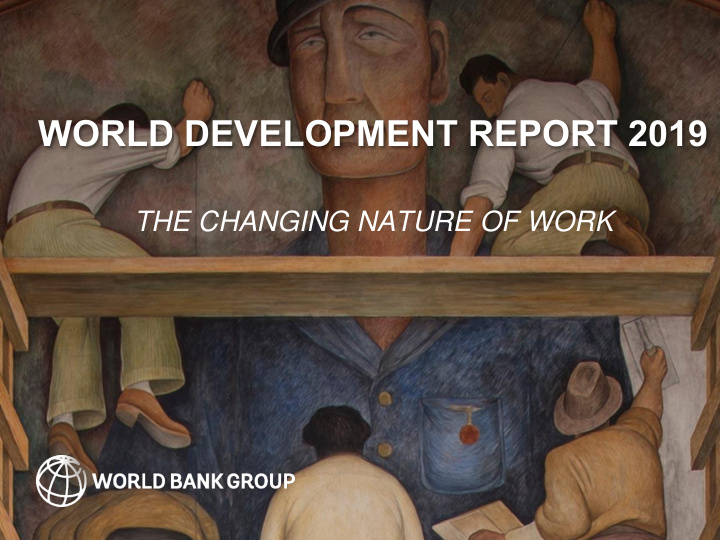



WORLD DEVELOPMENT REPORT 2019 THE CHANGING NATURE OF WORK
Technological Progress Can Expand Job Opportunities Automation Employment in each sector Lost employment in old Innovation sectors Remaining employment in New employment in new old sectors sectors Sectors (ordered by susceptibility to automation) Source: Authors’ analyses. 1
More than 1 million downloads http://www.worldbank.org/en/publication/wdr2019 2
What is changing?
Industrial Jobs are Falling in the West and Rising in the East Source: Authors’ analyses based on World Bank’s World Development Indicators (dataset) 4
Recent Technological Advances Accelerate Firm Growth Source: Authors’ analyses based on Walmart Annual Reports, Statista.com, NetEase.com 5
Technology Is Disrupting the Nature of Firms Posing New Policy Challenges New Superstar Firms: digital platforms operating globally, existing in the cloud Source: Author’s analysis based on data from Safaricom, KCB Bank Group, AirBnb, Marriot International Inc., Financial Times. 6
Technology is Changing How People Work and the Terms on Which They Work LESS standard long-term contract MORE short-term work often via online work platforms
Advances in Technology Call for New Skills seemingly overnight: “Adaptability” is Increasingly in Demand Source: Authors’ analyses. 8
What can governments do? What can governments do?
Three Areas For Policy Action: Human Capital and Lifelong Learning Social Protection and Labor Policies Revenue Mobilization 10
The Human Capital Index 2018 11
The First 1,000 Days Lay A Lifelong Foundation CHILD WITH STUNTED BRAIN DEVELOPMENT HEALTHY, CARED FOR CHILD Source: Authors’ analyses.
151 Million Children Under 5 Are Stunted Worldwide Source: Authors’ analysis 13
Re-adjustment is a Matter of Lifelong Learning: Tertiary Education Systems are Central • Transferable Skills • Lifelong learning • Platform for innovation 14
Three Areas For Policy Action: Human Capital and Lifelong Learning Social Protection and Labor Policies Revenue Mobilization 15
Convergence in the nature of work? Persistent informality and more fluid labor markets 64.7% average informality in emerging economies 16
** Rethinking Social Protection: Protect People, Not Jobs Labor market regulation Social insurance (mandatory and voluntary) Guaranteed social minimum Source: Authors’ analysis. 17
Complementing Strong Social Protection with Labor Market Flexibility Severance Pay 3 High flexibility Low flexibility High DNK NOR High protection High protection BEL ISL FIN 2 FRA DEU NLD AUT MDA 1 PRT Protection index ITA EST IRL HRV KGZ CZE HUN POL SRB CYP BLR GRC LTU LVA 0 BGR SMR 0.00 0.20 0.40 0.60 0.80 1.00 1.20 RUS GEO ALB -1 KAZ AZE ARM Low flexibility High flexibility -2 Low protection Low protection Low Aspiring to flexicurity… -3 Low High Flexibility index Source: World Bank (2018); Ridao-Cano and Bodewig (2018)
Three Areas For Policy Action: Human Capital and Lifelong Learning Social Protection and Labor Policies Revenue Mobilization 19
Tax Revenues Have to Rise, Especially in Developing Economies Source: Authors’ analysis based on International Centre for Tax and Development (ICTD) and UNU-WIDER Government Revenue Dataset 2017. 20
Social Inclusion Is Costly Simulated cost of UBI for closing the poverty gap by country income group (% of GDP) Source: Authors’ analysis based on World Bank World Development Indicators, World Bank PovcalNet, and United Nations World Population Prospects. 21
Some Countries Spend more on Energy Subsidies than on Social Assistance. Source: Authors’ analysis based on World Bank (2018a) and IMF (2015) database on country -level estimates 22
2019 World Development Report http://www.worldbank.org/en/publication/wdr2019 23
Recommend
More recommend